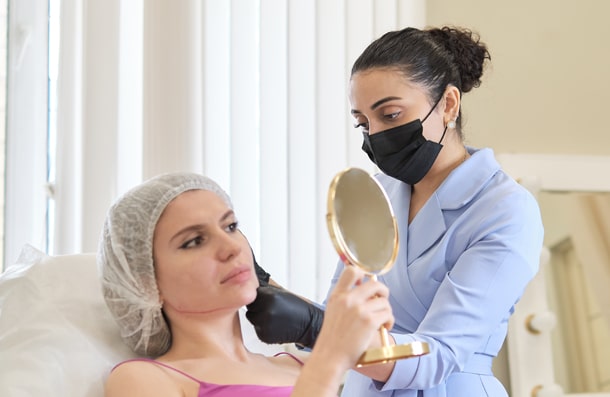Are you concerned about the effects of ageing on your appearance?
Wrinkles are part of the ageing process as, over time, the structural makeup of your skin alters. Skin slows down its ability to produce good collagen and elasticity from the late twenties. As the body ages, the appearance and characteristics of our skin change.


At Abbey Mead Dental & Implant Clinic, we believe a confident smile goes hand-in-hand with fresh, youthful skin. That’s why we offer a full range of facial aesthetic treatments, including dermal fillers and anti-wrinkle injections. To help you look and feel your best.
Our highly trained team provides safe, subtle, and natural-looking enhancements designed to complement your features, soften lines, and restore lost volume. Whether you’re looking to smooth wrinkles, refresh tired-looking skin, or enhance facial contours, we can create a personalised treatment plan to achieve your goals.
Take the first step towards a fresher, more youthful appearance today. Book your consultation at Abbey Mead Dental & Implant Clinic and discover the difference expert facial aesthetics can make.
Back to Facial Aesthetics